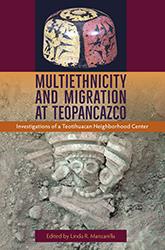Buy Books: Browse by Season: Spring 2017
Fall 2025 - Spring 2025 - Fall 2024 - Spring 2024 - Fall 2023 - Spring 2023Please note that while you may order forthcoming books at any time, they will not be available for shipment until shortly before publication date
Annotating and interpreting a vast collection of documents that illuminate and contextualize the 1822 Denmark Vesey plot, the editors of this volume argue that this landmark event was one of the most sophisticated acts of collective slave resistance in the history of the United States.
Beginning with the invention of balloons that lifted early explorers into the stratosphere, Ted Spitzmiller describes how humans first came to employ lifting gasses such as hydrogen and helium. He traces the influence of science fiction writers on the development of rocket science, looks at the role of rocket societies in the early twentieth century, and discusses the use of rockets in World War II warfare.
We Come for Good describes the development and operations of the Tribal Historic Preservation Office (THPO) of the Seminole Tribe of Florida as an example of how tribes can successfully manage and retain authority over the heritage of their respective cultures.
This detailed volume looks at 116 formal burials in Teopancazco, a powerful neighborhood that controlled the distribution of foreign raw materials from Teotihuacan toward Nautla in Veracruz.
Using archaeological and archival information, Chenoweth reveals how a web of connections led to the community’s establishment, how Quaker religious practices intersected with other aspects of daily life in the Caribbean, and how these practices were altered to fit a slavery-based economy and society.
Gathering oral stories and visual art from Haiti and two of its "motherlands" in Africa, Istwa across the Water recovers the submerged histories of the island through methods drawn from its deep spiritual and cultural traditions.
One of the Coast Guard’s great heroes and the secret he kept hidden
Here, leading scholars--including Hodgson himself--confront the longstanding theory that a liberal consensus shaped the United States after World War II. The essays draw on fresh research to examine how the consensus related to key policy areas, how it was viewed by different factions and groups, what its limitations were, and why it fell apart in the late 1960s.











